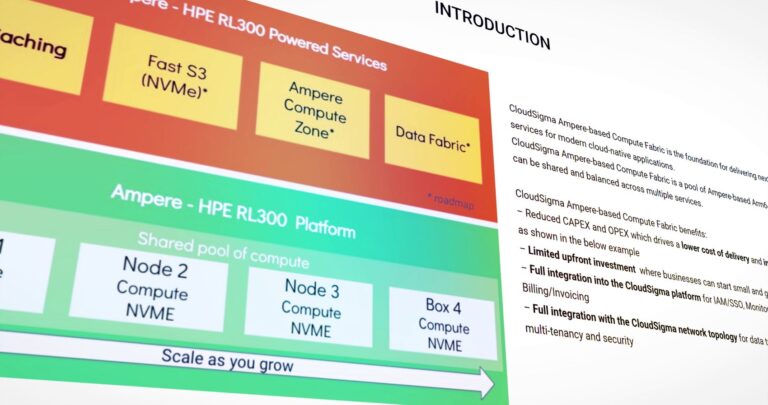As organisations transition their technology infrastructure to a more cloud-focused approach, it is imperative for leaders to comprehend the possible obstacles their company may face.
COVID-19 expedited the adoption of cloud solutions for numerous businesses. However, in the haste that followed, many failed to allocate sufficient time to strategy, operational efficiency, and to optimise their return on investment. A CIO article reported that, based on the HashiCorp-Forrester report, 94% of respondents are overspending in the cloud. This is a matter that should be resolved as companies cut back ahead of a looming recession.
This is where cloud FinOps emerges as an invaluable component of any organisation operating in the cloud. What does it entail? Simply put, it is the practice of effectively managing cloud expenses, streamlining financial operations, and mitigating unnecessary overspending. Essentially, helping find the most value from cloud technology. If your organisation is unfamiliar with FinOps, which is the case for many, there are various aspects you should take into account. Here are three key considerations:
The Transformative Role of AI in Cloud Financial Operations (FinOps)
AI is becoming ubiquitous, and cloud services are no exception. When it comes to managing financial operations within the cloud environment, AI-driven assistance for FinOps can offer valuable support and guidance. By implementing this innovative technology, along with appropriate measures to ensure accuracy, businesses can benefit tremendously.
However, this does not mean replacing human expertise with AI. Instead, it involves harnessing the data processing and analysis capabilities of AI algorithms in conjunction with human decision-making. This combination allows for the optimisation of cost efficiency, improved financial governance, and effective utilisation of cloud resources. By analysing vast volumes of data, identifying patterns, and predicting future trends, AI empowers organisations to make well-informed decisions, optimise budgets, and streamline their cloud expenditure.
So, with the aid of AI-assisted guidance, businesses can attain greater transparency, agility, and control over their FinOps strategies, enabling them to maximize the returns on their cloud investment.
Implementing Safeguards: Guardrails for Effective FinOps in the Cloud Environment
The term “guardrails” has gained popularity in the context of artificial intelligence, highlighting the importance of accurate and ethical AI implementation. However, the concept of guardrails extends beyond AI and holds significant relevance for FinOps as well.
Regardless of whether AI is used, businesses should establish preventive guardrails for their FinOps applications. These guardrails serve as vital mechanisms, proactively mitigating financial risks and promoting responsible spending within the cloud environment. By employing automated policies, rules, and thresholds that are enforced in real-time, guardrails prevent overspending, optimise resource allocation, and ensure compliance with financial governance policies.
Through setting limits on cost thresholds, utilisation metrics, and service usage, organisations can identify and address potential financial irregularities before they evolve into costly issues. This proactive approach empowers businesses to maintain cost control, enhance budget predictability, and eliminate wasteful expenditure, leading to improved financial management within the cloud environment.
Holistic Perspective on Organisational Cloud Expenditure
The foremost priority is establishing a holistic perspective on organisational cloud spend, as it grants businesses comprehensive visibility and control over their cloud expenses across various accounts, services, and providers. This financial transparency prevents overspending on cloud services and maximises return on investment.
By embracing FinOps principles and practices, organisations can effectively analyse and comprehend their cloud costs, optimise resource allocation, and align spending with strategic business objectives. This unified view facilitates efficient budget management, cost attribution, and informed decision-making, empowering businesses to identify cost-saving opportunities, track cost drivers, and optimise their cloud investments for optimal value and efficiency.
While the integration of cloud services is already widespread among organisations, many are just beginning to grasp the intricacies of cloud cost management. Consequently, FinOps for the cloud is expected to become a mainstream practice in the coming years—a prerequisite for any well-managed business leveraging cloud technology.
About the Author
Stephen Old is Head of Finops for Cloudreach, an Eviden business. Cloudreach, an Eviden Business, is the world’s leading multi-cloud services company. Our mission is to deliver the promise of cloud and drive extraordinary value for our customers. Cloudreach helps enterprises win competitive advantage through successful cloud transformation. We’re the go-to strategic partner for Amazon Web Services, Google Cloud and Microsoft Azure. With more than 13 years of cloud native experience, we’ve built an unmatched depth and breadth of expertise in cloud technologies and their application to business. For more information about our work, visit www.cloudreach.com.
Featured image: ©kras99


